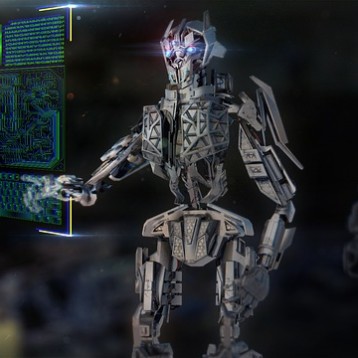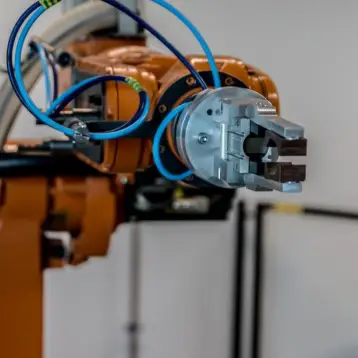The M-TRAN is composed of identical robotic modules, each of which is equipped with a connection mechanism, actuators, sensors, and microprocessors. The robot can be constructed from a different number of separate modules, making it possible to build robots in a variety of sizes and shapes. Once an initial 3D structure is constructed, the M-TRAN system can transform itself from one configuration to another, changing not only its shape, but also its size and type of motion.
|
In general, there are two types of modular reconfigurable robots: chain-type and lattice-type. Chain-type robots form serial chains, connecting and disconnecting to form various loops, while lattice-type robots move their modules between neighboring positions on a lattice. M-TRAN is a hybrid, in the sense that it incorporates both approaches in its design, and the scientists say this provides the robot with extra flexibility. A single M-TRAN module consists of two connected half-cubic half-cylindrical blocks – each of the three flat surfaces of each block can mechanically connect and couple with the surface of another module. The two components aren’t identical – one of them is a “passive” block, which can only rotate at 180 degrees by moving on its rounded surface, while the other is an “active” block, able to move itself over the passive block, connecting to it from the opposite side. Each M-TRAN module has its own controller and “brain”, and all the controllers cooperate in forming a distributed autonomous system as a whole.
In a small sized configuration, the M-TRAN can be formed as a two or four-legged robot and then reconfigure into a snake-like structure that can pass through narrow spaces, moving similarly to a caterpillar. In larger configurations, the robot can climb steps and perform flow-like movements, similar to the motions of a snake. By transporting its
|
modules one-by-one, the M-TRAN gradually changes its structure into the state suitable for its environment.
The Japanese researchers say that possible applications of the M-TRAN system include autonomous exploration of unknown environments such as planetary explorations, or search and rescue missions in areas struck by disaster. For these purposes, the Japanese scientists have developed a special cubic camera module, three surfaces of which are connectable to an M-TRAN module.
For additional information, visit the AIST official website for M-TRAN and watch a video demonstrating the robot here.












